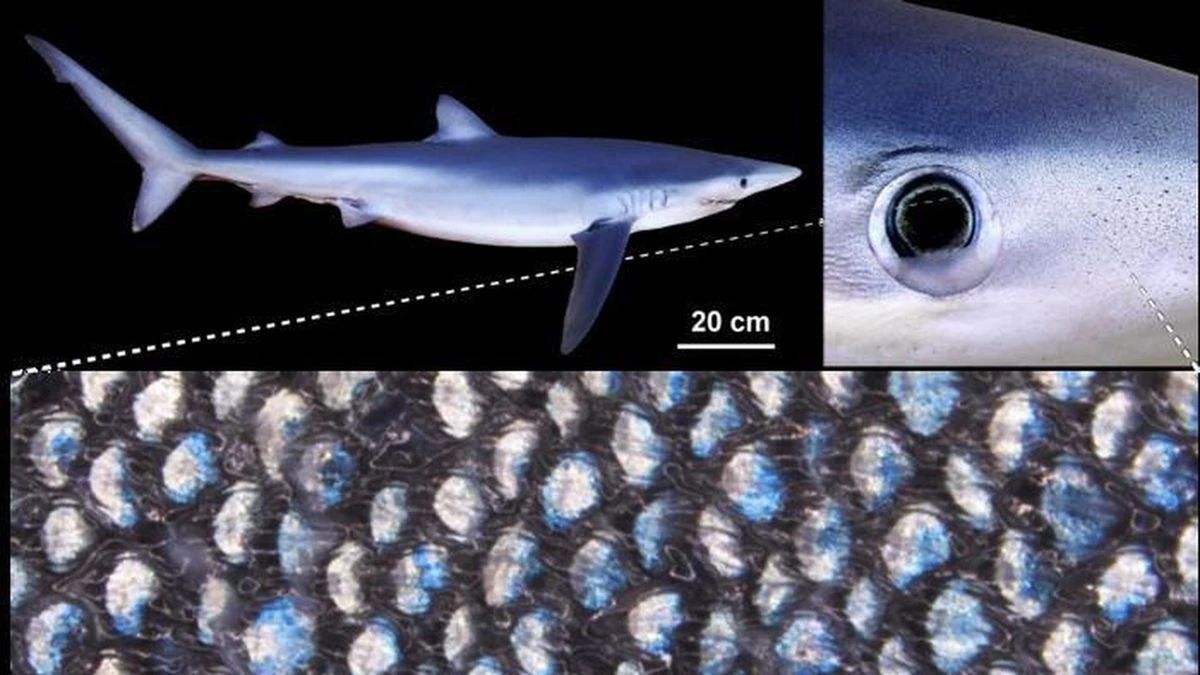🦈 The blue shark can change color, like a chameleon
Published by Cédric,
Article author: Cédric DEPOND
Source: Eurekalert
Other Languages: FR, DE, ES, PT
Article author: Cédric DEPOND
Source: Eurekalert
Other Languages: FR, DE, ES, PT
Follow us on Google News (click on ☆)

Dermal denticles of the blue shark.
Credit: Dr. Viktoriia Kamska
This discovery is based on a detailed analysis of the shark's denticled scales, revealing a sophisticated optical mechanism. Scientists suggest these structures could react to the environment, providing a previously unknown camouflaging advantage among sharks.
A nanometric mechanism
The shark's blue color comes from guanine crystals, which reflect blue light, combined with melanosomes that absorb other wavelengths. These elements, encapsulated in distinct cells, act like a selective mirror and an absorbing filter.
The spacing between crystal layers determines the hue: when compressed, they produce blue; when expanded, they shift toward green or yellow. Digital simulations have confirmed this flexibility, though its natural activation remains to be observed in situ.
This system resembles that of chameleons, but with an evolutionary peculiarity unique to sharks, which diverged from bony fish millions of years ago.
An environmental adaptation?
Researchers hypothesize that water pressure at depth compresses the crystals, darkening the skin to better blend into the abyss. Such an adaptation would be the first demonstrated in a shark, though other species show similar signs.
Potential applications are already inspiring biomimetic engineering. Structural coloration, less polluting than chemical pigments, is of particular interest to maritime and textile industries.
Finally, this study highlights the diversity of animal strategies for producing blue, a rare color in nature. Sharks thus offer a new model for understanding the evolution of optical mechanisms.